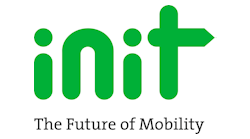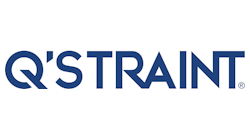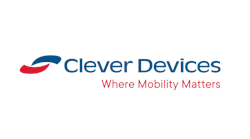Improving Internal Communication
Fort Lauderdale, Fla.
Casey Grafe
Marketing Specialist
Q'Straint
Did you know that one of the leading problems among organizations is a lack of communication between employees and management? Fortunately, there are ways of combating this pandemic. Some companies have even mastered the art of communication. Here are effective techniques for building strong internal communication within your organization.
Encourage employees to interact with one another, both horizontally and vertically. Managers should lead by example, regularly sharing ideas and dialogue, while also being receptive to feedback. Open door policies tend to promote positive communication habits among employees, especially on a multi-level basis.
It’s no secret that employees want to feel appreciated. Taking time to remind employees that their contributions and ideas are valued will rarely go unnoticed. This empowers them not only to work harder, but to feel more comfortable communicating with managers and high-level executives. Utilizing suggestion boxes and surveys provides a less formal and more discrete outlet for idea sharing. Often times, timid employees are more likely to respond to these methods. This empowerment builds confidence, allowing them to be more open with managers – and sometimes this is how the best ideas are born.
Enable employees by providing the proper tools. Trade in traditional meetings for new online tools that facilitate more efficient reporting, team updates and project management. There are tons of great online tools that allow employees to do everything from instant message to web conference. Good old fashioned emails and newsletters are great for sharing companywide information as well.
Transparency is immensely powerful in fostering strong communication and creating a sense of unity among employees. It builds trust between leaders and their counterparts, allowing relationships to grow authentically, while simultaneously avoiding potential miscommunications. Conveying a clear vision with defined goals, expectations and roles puts all team members on a level playing field. These objectives should be laid out for new employees and regularly reiterated to existing employees. This can easily be accomplished through the establishment of processes.
Established processes support a streamlined work environment. Implement a communication structure, whether it be daily, weekly or monthly, for how employees should interact regarding key initiatives. This can be through daily protocols, weekly meetings or monthly reporting. Confusion can often be avoided when all team members are aware of each other’s roles and current task lists. This understanding allows team members to be more empathetic towards one another and strategically plan projects based on each employee’s workload.
It’s always nice for employees to get together in a social environment outside of the workplace. Happy hours and group lunches are a good start. This allows employees to bond on a more personal level in a more casual setting. Developing a deeper level of comfort between peers typically promotes honest and productive communication practices in the workplace.
The ability to effectively listen is perhaps the most vital component of communication in any setting, especially in building strong communication within an organization. John Wooden said it best, “Listen if you want to be heard.”
Baton Rouge, La.
Kenderlynn Christophe, SPHR
Director of HR & Labor Relations
Capital Area Transit System
Internal communication has got to be one of the most underrated, underutilized, underappreciated, untapped yet critical resources in any organization. Whether public or private, large or small, start-up or established blue chip, lean or highly-matrixed, how we get information to our employees and how we receive information from our employees can mean the difference between developing a raging or reinforcing a fossilized and stoic structure of top-down mandates.
Establishing and maintaining a healthy and highly functioning environment of communication depends heavily on the organization’s ability to understand public relations is not purely an external function. As with our external customers and other stakeholders, we are on a continuous and hopefully evolving perennial campaign trail. After nearly two decades of personally being at one time or another a student, a fan, a campaigner, a candidate, a cabinet member, a pollster, a voter, a reporter, a pundit, an editor, advisor, debater and campaign organizer, I’ve learned a few basic things about this internal communications conundrum that seems to, even after all this time, give many a well-intentioned leader a bit of a fit and a lot of uncertainty
Do we have to keep talking about our mission/values/vision/company message?
Consistent and regular reinforcement of where we stand, what people can expect, our absolutes, our service guarantees and our own accountabilities help us to maintain a culture of transparency and allows us to set expectations of the kind of organization we claim to be. It’s our internal brand identity. It’s what distinguishes us from our competitors.
We’re a traditional crowd
Although this may sound weird or old fashioned to some, this type of communication is absolutely still in full swing throughout many organizations. While this mode of messaging can be cost-effective and easy to implement, imagine how impressed and valuable employees would feel, if you went not just an extra mile but many extra miles to make sure they have constant, consistent, and just really cool ways to access information. For instance, in our own organization we have made a multi-faceted, multi-phased commitment to re-establish some intra-organization cultural norms, which will include transformational changes in how we communicate. On tap is a re-imagined onboarding experience instead of new hire orientation, desktop/laptop/tablet/mobile smart app access to benefit, health and wellness information instead of single-use paper bulletins, and semantic evolutions that will help us evolve from an “employee” base to a “team member” environment.
We are always telling our employees what to do
Consistent, timely messaging and walking examples of policies, procedures, mission, vision, and values are fair and square at the center of any organization’s credibility with it’s internal customers and stakeholders. When we implement actionable standards and apply them consistently at all levels throughout the organization, it reinforces our employees’ faith and belief that we have nothing to hide. Whether it’s the internal job application process, access to training and development opportunities, disclosure of critical information which may impact people’s abilities to do their jobs effectively or information about salary grades, people need information. And they need to be confident that the same level of expectation regarding performance and behavior standards will be consistently applied to everyone. When we employ this time tested strategy, we actually do empower people to operate as teams which reinforce personal accountabilities and groupthink, thereby reinforcing the organization’s culture commitments in the buildings and on the street. We develop internal fans (employees) who work with us as leaders to develop external fans (customers).
Woodbury, N.Y.
Amy Miller
Managing Director, Marketing and Sales Operation
Clever Devices
Clever Devices understands first-hand the challenges of effective and meaningful internal communication. We strive to keep our current employees informed, onboard new hires and assimilate employees who have become part of our team through acquisitions. We are also sensitive to the fact that almost 50 percent of our employees are based in one of our six satellite offices or out of their homes.
As it is, our team members are currently managing an onslaught of messages and information delivered via a wide range of communication vehicles, so we have the added challenge of ensuring our internal messages are received.
Our internal communication goals are simple: establish common knowledge, engage employees and drive our business objectives so that we can better serve our market.
While it is an ongoing process, we have identified some best practices that we would like to share.
- Be Authentic. We learned early on that it is critical that we speak with an authentic voice and are honest and open with our employees. As a privately-held company, we may not have the same reporting obligations as public companies, but our employee base is professional, talented and very bright, and it is in our best interest to keep them informed.
- Deliver Consistent Content. We work hard to ensure that our messages are consistent. There are key themes and topics that our employees have come to expect. We share our successes and our lessons learned; our strategies, goals and financial performance; and industry updates. We also reinforce our tagline, “Transit Matters Here,” at every possible juncture to ensure that this is foremost in our employees’ minds.
- Use Multiple Delivery Vehicles. We have learned to not rely on a limited number of communication methods. First, people have different ways of learning and multiple methods ensure everyone is more likely to absorb the information. And secondly, repetition is good. In addition to traditional methods, we also have formal channels, such as our quarterly town hall meetings and our monthly newsletter, and we start each workday with a well-attended conference call to review project status and set priorities. We also have more informal methods including fun sessions such as “Breakfast with Buddy;” a cross-functional, multi-location culture committee that brings employees’ ideas forward; and a well-established open-door policy.
- Be Relevant. The messaging must be relevant to employees and be inspirational. We work hard to treat employees like customers; we have to be proactive with the messaging, giving them the information they need at the right time and making sure that they hear it from us first. We are sensitive to the frequency of messages, taking care not to inundate them, and we are sensitive to remote employees, avidly using a variety of conferencing and communication tools that encourage collaboration and keep everyone informed. It is also important to celebrate individual and team accomplishments. In addition to management recognition, we have spot bonuses and shout-outs where peers acknowledge each other, resulting in team members feeling valued.
- Listen. Last, but definitely not least. Communication has to flow in both directions, and it is critical not only to listen, but to demonstrate the ability to change. Some recent changes in company policies such as our dress code, the number of paid holidays and paid time off for volunteering are the result of listening to our employees. We have to continue to create opportunities for dialogue and feedback. Buddy Coleman’s father, Frank, was one of Clever Devices’ founders and he used to say, “God gave you two ears and one mouth for a reason. You should listen twice as long as you talk.”
Like all of you, the face of the workforce at Clever Devices is changing and we have to adapt to meet their needs. Millennials and Generations X and Y expect a collaborative workplace and want to be part of the process, and strong internal communications can certainly go a long way toward employee engagement and satisfaction.
Burlington, Mass.
Susan Nemetz
Executive Vice President, Fare Collection Systems, North America
Scheidt & Bachmann USA Inc.
Scheidt & Bachmann is called on to apply expertise in systems solutions and manufacturing to deliver cutting edge design, deployment and support for mass transit agencies. When considering efficient and effective internal communications to fulfill the customers’ needs, this presents myriad challenges, as we supply all aspects of the transit project including expert project management, encompassing multiple design and software development phases, manufacturing, equipment and network installation, warranty support, post-warranty support, hosting options, training, and documentation services. Through this whole process, we must be able to guide our customers through this transformation as a trusted advisor.
As the managing director for the U.S. market, I believe that my personal responsibility is to make sure that our team has the support, tools and information they need to most effectively perform their work and deliver the best possible results to our customers. In order to properly facilitate this, internal communication is critical with both our parent company as well as throughout our various facilities across the U.S. A few key practices come to light as paramount to foster proper communication:
A Solid Project Plan
The project manager should be supported by a multi-functional team representing all functions involved in delivering complex and comprehensive projects. Through this a PM is strongly supported from an organizational standpoint. Likewise the PM is empowered to render project technical and commercial decisions on behalf of the company. In the case of Scheidt & Bachmann, we utilize PRINCE 2, an internationally known and practiced Project Management Methodology (PRINCE2 is an acronym for Projects IN Controlled Environments, version 2). This was chosen as the preferred framework due to its excellent fit with the company’s project culture. It is fully organized within the organization and offers the following advantages:
- A: Our projects are conducted utilizing an internationally recognized and standardized approach
- B: Projects are in stages, enabling better control of deadlines and schedules
- C: There are standardized rules and processes to follow, allowing for transparency and an increased manageability of projects and resources
- D: Risk management used to identify and avoid, mitigate and/or solve critical events and issues
- E: Our projects are conducted in a controlled environment – accountability is ensured through determination of business case, quality criteria, and risk identification and management
- F: Pre-defined rules and standards are balanced with flexibility for optimal operation in a complex project environment
Effective Regional and Account Management
We strive to encourage growth and new opportunities within our team and while celebrating our successes. This includes adding key new roles to support our expanding customer base and changing customer needs and adding capacity in critical areas to make sure that we can deliver on our commitments. In the U.S., we’ve introduced regional and account managers who are working closely with transit management to both listen and be more responsive towards individual customer requirements. Internally, the regional managers work as a team with service and project management to ensure the implementation and continuity of principal fare collection system projects throughout the lifespan of the system. This requires the RM to wear a few hats, such as “internal marketer” and supervisor of various internal logistic and operational processes.
Good internal communications are central to the success of the company and the systems provided to our customers. For a global organization to operate seamless across locations, departments and providers, a proper plan and structure that facilitates proper communication is essential to meet critical business demands.
Chesapeake, Va.
Ann Derby, CTSM
Director of Marketing & Events
Init Innovations in Transportation Inc.
In today’s technology-rich environment, staying in tune with customers is a fluid and dynamic process. The goal should be to engage and empower customers by providing relevant avenues of communication where meaningful connections are fostered.
Making that happen may look different for each company, but some key factors may help to reach that goal. Below are a few methods that Init uses to promote healthy customer communications.
Customer e-Support Portal is an online resource that allows our customers to connect with us at any time of day or night. When there is a need for service or support, a request can be submitted through the portal where our customer support staff is alerted via e-mail of the new request. Our customers may then track the action being taken to resolve the request.
The Customer e-Support Portal also allows our customers to see their tickets, create filters and view dashboards in order to manage their request.
A customer may also call our customer support line to talk to one of our team members regarding a question or to submit a new request.
Interactive Webinars allow our customers to receive training on current products and to learn about new system features. Init’s in-house technical experts host the webinars using live system demonstrations and open discussions, which help to facilitate customer engagement.
The interactive webinars are a direct outcome of our customer working group meetings which incorporate five main objectives: collaboration, sharing of best practices, developing common practices, future development of Init products and cost cooperation.
Working group and user group meetings are customer-focused events that provide collaboration opportunities with other Init users worldwide, personalized product training, news on trending and future transit technologies, and private meetings with Init staff. These meetings provide plenty of face-time with Init managers, customer support personnel, product engineers, developers, and sales team members.
The Technology e-Newsletter is a biannual e-newsletter that highlights the latest Init product developments. Many times our customers’ suggestions are incorporated into these emerging technologies.
Social media and video are must-have tools for effectively reaching customers today. This involves the use of several media channels for customer engagement. Through Facebook, LinkedIn, and YouTube.
Whitepapers provide content that builds our customers’ confidence in our role as an industry thought leader. It is one approach that we use to address the topics that matter most to them. Our whitepapers enable customers to have straightforward subject material for speaking to issues that affect our industry.
The INITiative is a publication distributed to our customers and business partners to offer articles from a global viewpoint. Stories cover progressive technology and innovative transit projects. Front page news regularly highlights different customer projects demonstrating our commitment to showcase their successful systems.
Cultivating healthy communication requires modern platforms where customers are empowered and actively engaged. We believe it’s the key factor in building strong partnerships in the 21st century.






